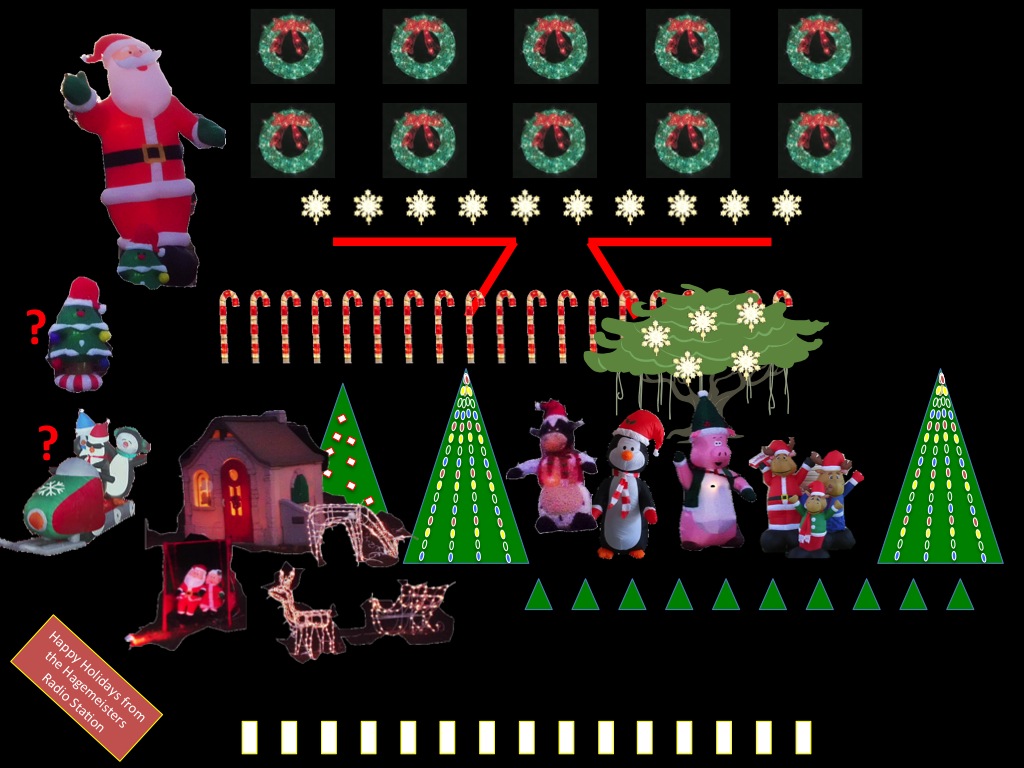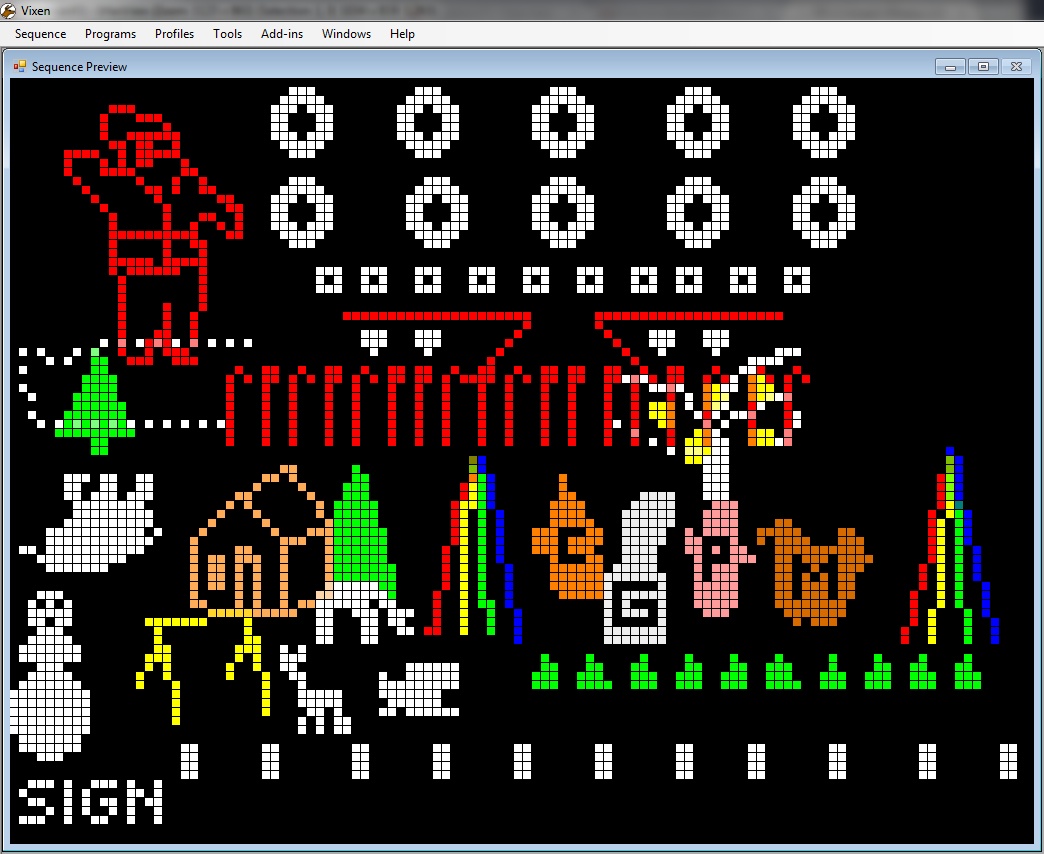It’s that time of year again and the best of intentions for more actively sharing life’s happenings has become a bit of an embarrassing failure. Nonetheless, as Christmas 2012 approached, we finally implemented the 2-year planning for a synchronized Christmas lights and music display.
The 48-channel DIY system was completed along with a fairly good light show, reinforced by a dozen songs. Below are some of the best vids of the light show, followed by a more detailed description of the setup and work involved as well as future plans.
We also did a light sequence for Gangnam Style, but we’re having a tough time with the fair use exemption and Youtube so it’s only available here for now:
Christmas Lights 2012 – Gangnam Style
The System
There is much of the light system’s history in an earlier post this year so this is more of an update along with adding details and links missed earlier. So here are the links for the Lynx Express kits and USB DMX Dongle kit I finished soldering and testing in January/February 2012. Unfortunately, I (Fred) had only done some basic prep work through November of this year and didn’t get it all together until the 2nd week of December. Thankfully, there have been a dozen cars visiting the light display every night in the last few weeks to make it feel worthwhile.
I settled on using the freeware app called Vixen (version 2.1.1.0) for sequencing the lights/music and running the light shows, and I’m using a standard Windows 7 PC with the sound connected to a CZH-05B radio transmitter for the radio station (I went to http://radio-locator.com to find a clear frequency, but I recommend you check a highly sensitive car stereo to confirm because three stations supposedly far out of range were reaching our house).
To proceed, I first needed to decide on the spatial arrangement for the light display and which channels would control which lights. I took the photos from prior years’ displays and organized them into a rough arrangement that could be used for creating a digital model of the setup in Vixen software. Here is the pseudo-photo:
To be extra-geeky, I took the above layout and super-imposed it onto a Google map of the yard so I could get a better sense of the distances involved and how best to group the features into the 16-channel clusters needed due to the boxes. Although embarrassed to admit that I used PowerPoint for arranging the items in the above image, it made it quite easy for re-using them for the map layout (see image below).
So in the image above, the locations of the DMX light control boxes are indicated with the numbers 1, 2, and 3, and all of the controlled features in those areas had to have power cords to reach the boxes. Another factor was the CAT-5 cable that connected the boxes to each other and the controlling computer.
I then had enough information to create the ordered line-up of the channels. Although this took much time and seemed over-geeky if not anal, I am glad I did because it is painful to re-order the lights in the Vixen software (even with an available re-ordering function). I used a Google spreadsheet for the planning (see table below).
I then took the ordered list to create the “profile” in Vixen for the light display setup (see image below).
I was then able to use the profile and image above as a guide for creating the low-resolution model in Vixen that would simulate the real light show (see the screen capture below along with a sample video simulation).
Finally, I could then begin creating the light sequences (arrangements/choreographies) for the selected music. In general, I began looking at a few sharing sites for sequences I could adapt. In the cases of sequences for non-Vixen 2.1 sequences, there are a few apps for converting them to Vixen. However, the most important factor in trying to re-use someone else’s sequence is whether one can easily purchase or rip the CD for the particular song since one singer’s rendition will have quite different timing than another’s (or even the same person’s performance from another album), i.e., they may not be close enough for the accuracy needed to have the light sequence look right. Beyond that, one hopes that the available sequence(s) has the kind of features that can be adapted to those in one’s own light show. In my case, I downloaded dozens of sequences, but in the end, most were tossed out because I could not open them in my installation of Vixen, they had very different light displays, or I did not care for their sequencing choices. Even in the sequences I did keep, I altered them enough that I probably spent as much time as if I had started from scratch. Even after spending 3-8 hours sequencing each of the above songs, I still find a fair number of places to improve upon the sequencing for next year.
Once I had each sequence working with the music, I tested the radio station being able to output the music to my car radio without any noticeable lag time. I then used Vixen to create a program (ordered set of songs). Finally, Vixen has a scheduler to set the date and time ranges for the light show to run (one need to make sure the computer and Vixen are running as the show needs to begin each night).
Additionally, I wrote a welcome message that included greetings from my family, light show schedule, and a safety and courtesy message. I added some background music as well as a light sequence so the message would not seem odd in the lineup. I also made a version of the announcement that ran every few minutes during the day for people who happened to tune into my radio station by way of the yard sign.





